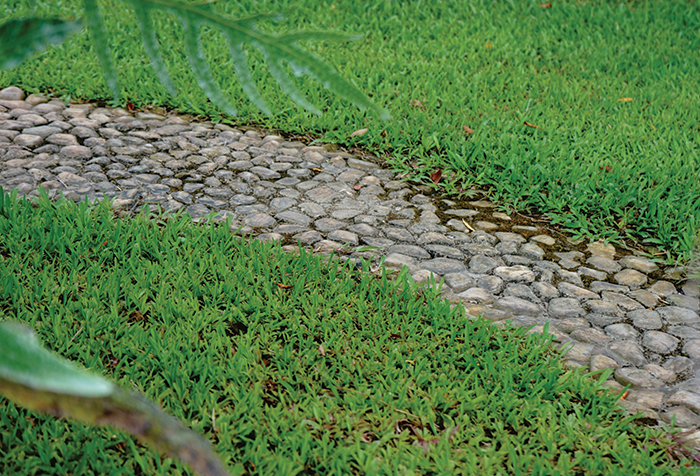Firescaping: A “Must Add” to Your Summer To-Do List
WHAT IS FIRESCAPING?

Firescaping is a proactive landscaping technique that involves the selection and placement of plants and landscape accents in a way that helps to reduce the spread of wildfires around your property. The idea is to create fire-safe zones and surround structures with materials that are less likely to burn.
Since the spring and summer months offer more comfortable temperatures for outdoor projects (particularly for individuals living and working in colder climates), adding some fire-conscious gardening tasks to your summer to-do list makes good sense.
Keep in mind that the 30 feet closest to your home or business is the most critical defensible area. Work to make this a non-burn zone.
Getting Started
Without doing a deep dive on horticulture, we offer some general tips:
- Select fire-resistant plants; high-moisture/low-oil are best.
- Consider replacing broadleaf and needled evergreens (pines, spruces, junipers, firs) with deciduous trees and shrubs, which are less combustible.
- Avoid ornamental grasses, climbing vines, and big growing perennials that die back in winter and leave a lot of combustible leaves.
- Use irrigated lawns and succulent groundcovers on slopes, hillsides, and around buildings to suppress fast-moving ground fires.
- Create defensible spaces by taking advantage of driveways, sidewalks, and patio areas built with cement, stone, or brick pavers.
- Replace bark mulch and wood chips with gravel or stones. Use pea gravel in planters and flower beds.
- Create separation between layers of vegetation, eliminating “fuel ladders.”
- Add ponds, streams, fountains, and/or pools as effective fire/fuel breaks. Be creative with boulders and rocks.
- Construct fences with non-combustible materials.
Other Maintenance Measures
- Clear dead vegetation.
Rid the landscape of dead plants, grass, twigs, branches, and leaves. - Remove combustible materials.
Clear out firewood, cardboard boxes, and building materials within 30 feet of any structures and from underneath decking. - Keep grass short and control weeds.
Mow grass to four inches or shorter near all structures. - Prune shrubs and trees.
Trim dead and extended branches. Keep limbs at least 15 feet away from chimneys, power lines, and structures. - Clean out gutters.
Keep rain gutters clear by removing dry leaves and pine needles that are extremely combustible. - Check the roof.
Remove dead/dry leaves; prune back any branches that hang over the roof. - Compost carefully.
Avoid excessively large bins. Mix the pile regularly and water the layers often. - Water regularly.
The healthier the landscape is the less vulnerable it will be to fire. Water regularly and feed/fertilize as needed.
A WORD ABOUT LADDER SAFETY
Since landscape maintenance will require the use of a ladder from time to time, it’s worth noting some best practices:
- Select the right ladder for the job. Consider how high you need to go and how much weight the ladder can hold. Tie off the ladder and use a spotter whenever possible.
- Inspect the ladder before use. Never use a damaged or defective ladder.
- Set up the ladder with caution. Start with a firm foundation. Ensure step ladders are open completely and locked. Have straight and extension ladders extend at least three feet above the roof or platform, and secure them to an upper support.
- Climb with care. Maintain three points of contact while climbing. Always face the ladder and use the rungs as grips; refrain from leaning. Never step on the top of a stepladder.
Helpful Resources
CA DEPT. OF FORESTRY AND FIRE PROTECTION
www.readyforwildfire.org/prepare-for-wildfire/get-ready/fire-smart-landscaping/
INSURANCE INSTITUTE FOR BUSINESS & HOME SAFETY
disastersafety.org/wildfire/
NATIONAL FIRE PROTECTION ASSOCIATION
https://www.nfpa.org/Public-Education/Fire-causes-and-risks/Wildfire/Preparing-homes-for-wildfire
Loss Control Materials
Be sure to visit our Agency or Policyholder Service Centers (accessible from www.guard.com) for a wide array of additional loss control materials. You should also feel free to contact your insurance agent for advice.
Disclaimer: The GUARD Wire is designed to provide general information about various topics of interest and should NOT replace the guidance, advice, or recommendations from licensed insurance or legal professionals, other industry experts, or state and federal authorities.


